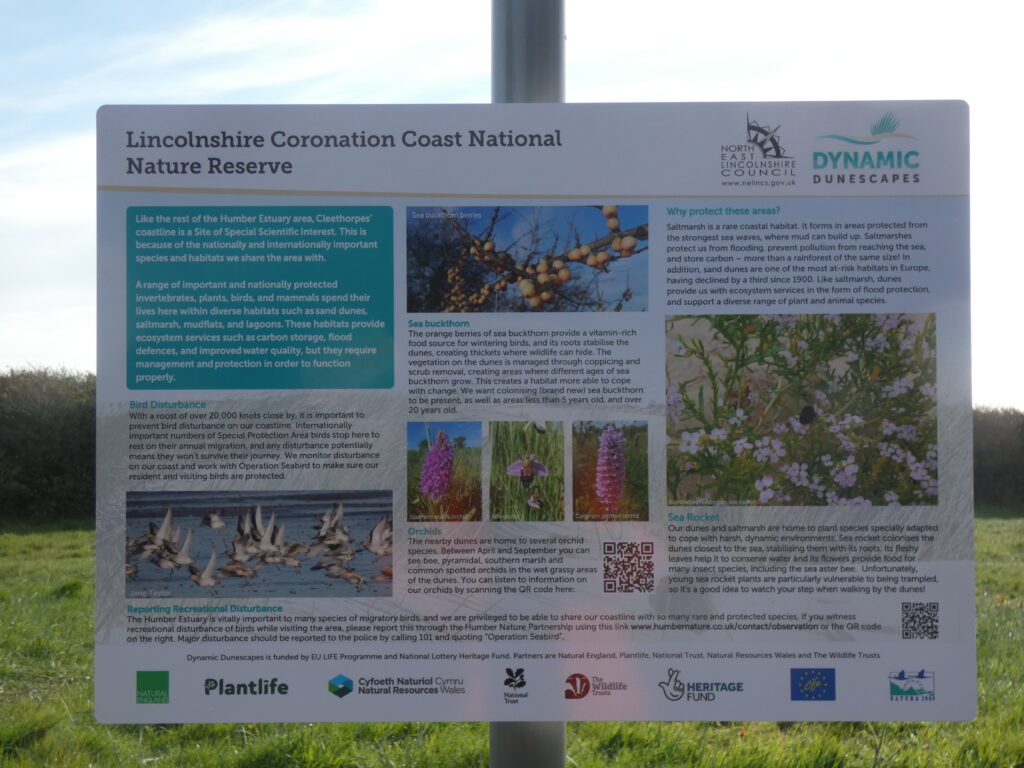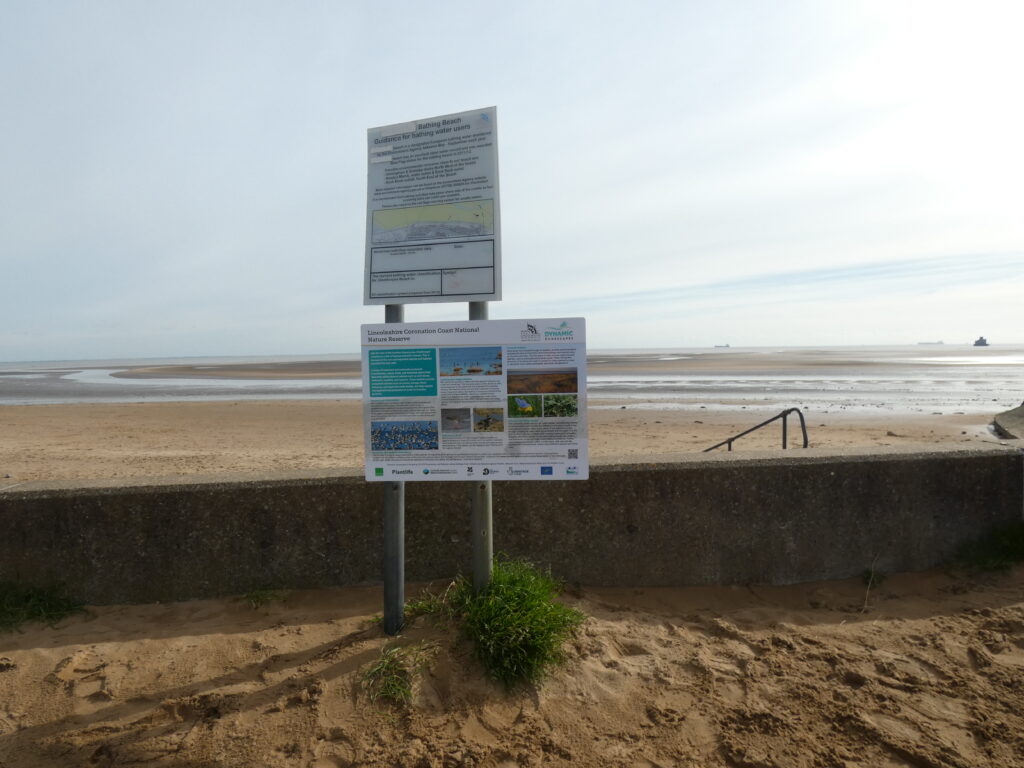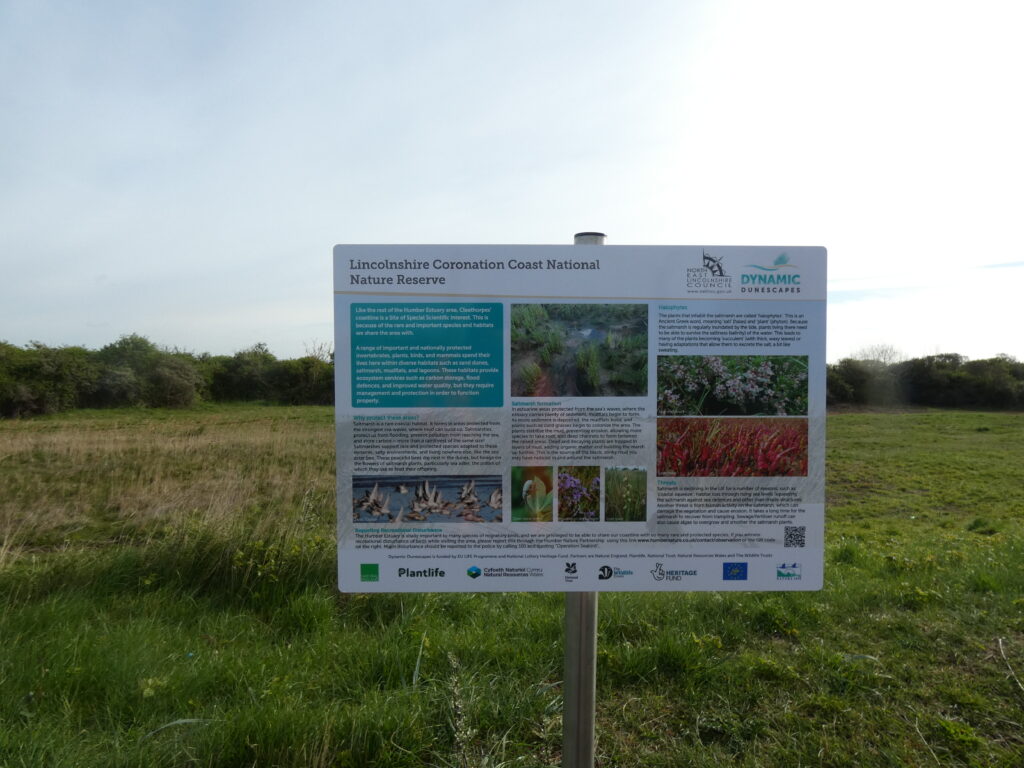New signs showing the wealth of wildlife to be enjoyed and respected along the Humber Estuary, and especially the North East Lincolnshire coastline, have been introduced in Cleethorpes this week.
The colourful information boards can be seen in four locations close to Cleethorpes Leisure Centre, Meridian Park, the Thorpe Park exit onto the beach, and the Yacht Club car park. They have been funded by Natural England.
Like the rest of the Humber Estuary, the Cleethorpes coastline is designated a Site of Special Scientific Interest (SSSI). This is because of the rare and important species that residents and visitors share the area with.
A range of important and nationally protected invertebrates, plants, birds and mammals spend their lives here within diverse habitats, such as the sand dunes, saltmarsh, mudflats and lagoons. These habitats provide ecosystem services such as carbon storage, flood defences, and improved water quality, but they require management and protection in order to function properly.
There are many reasons why people need to enjoy these remarkable areas with protection in mind. Cleethorpes is a hugely popular seaside resort and also a place of choice for water sports’ enthusiasts. There are few other places where protected natural habitat is so close to a busy tourist destination.
The coastline and the species that inhabit it are very vulnerable to recreational disturbance. This not only means dogs or paddleboarders approaching and disturbing the bird species that live here, but other activities can cause serious damage too. Many of the plants that grow in this area are fragile, and damaging them, even by walking over them, can lead to erosion of the dunes and loss of habitat.
Saltmarsh is a rare coastal habitat. It forms in areas protected from the strongest sea waves, where mud can build up. Saltmarshes protect from flooding, prevent pollution from reaching the sea, and store carbon – more than a rainforest of the same size!
Saltmarshes support rare and protected species adapted to these dynamic, salty environments, and living nowhere else, like the sea aster bee. These peaceful bees dig nests in the dunes, but forage on the flowers of saltmarsh plants, particularly sea aster, the pollen of which they use to feed their offspring.
With a roost of over 20,000 knots close by, it is important to prevent bird disturbance on the coastline. Internationally important numbers of Special Protection Area birds stop here to rest on their annual migration and disturbance means they won’t survive their journey. Disturbance on the coast is monitored and NELC works with Operation Seabird to make sure that resident and visiting birds are protected.
The intertidal mudflats and saltmarsh in this area support tens of thousands of migratory and resident wildfowl and wading bird species, including internationally important species such as curlew, golden plover, and oyster catchers.
The new signage boards provide in-depth information on the bird, wildlife and plant species which thrive in specific areas along the Cleethorpes coastline, and explain in more detail why it is so important to protect them.
The message from North East Lincolnshire Council remains consistent in encouraging residents and visitors to enjoy the beauty of Cleethorpes, but always to observe safety measures to protect nesting birds from disturbance by following these simple steps:
- Keep to the designated footpaths
- Keep dogs under control
- Anyone using the coastline for water sports must stay away from the salt marsh and sand banks.



Share this article